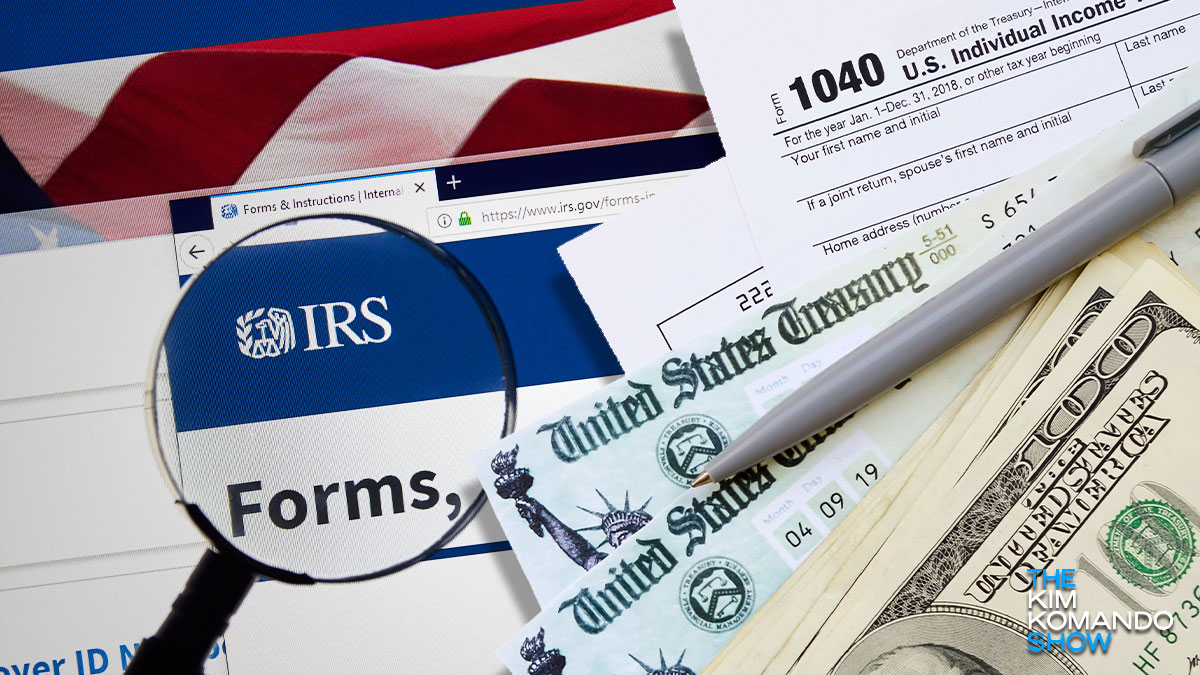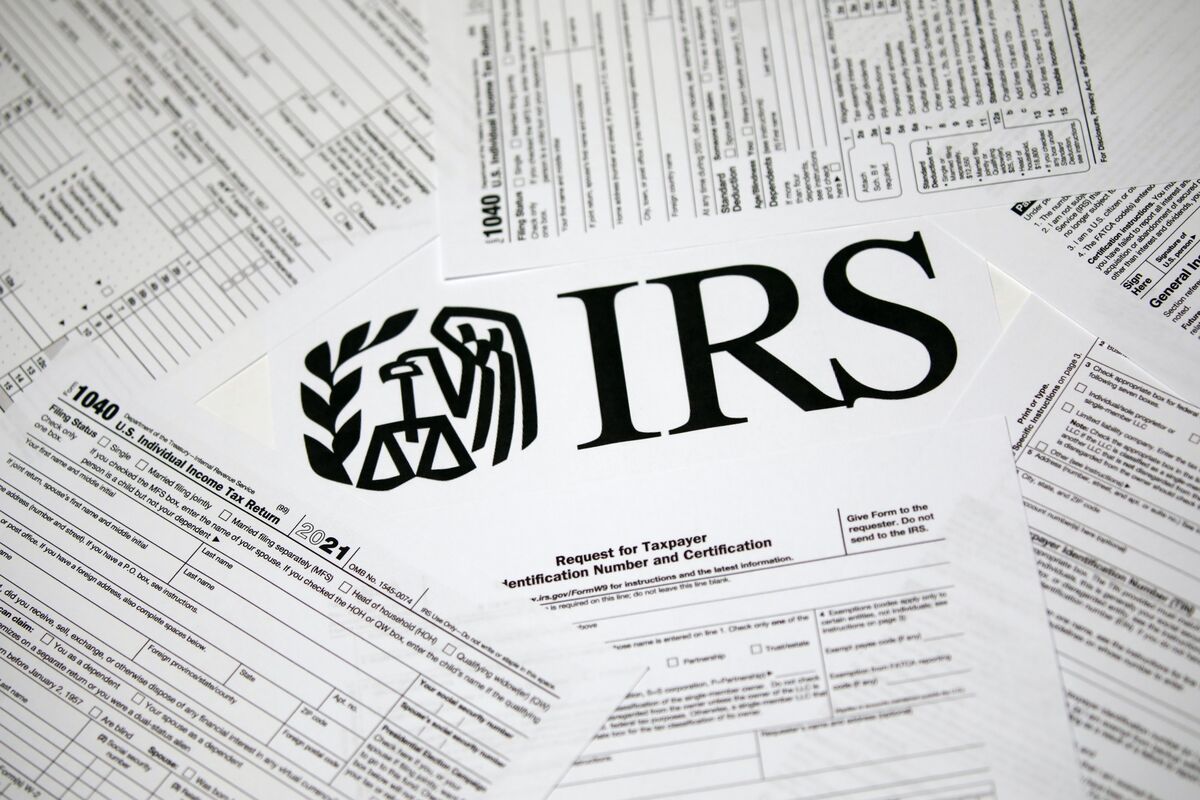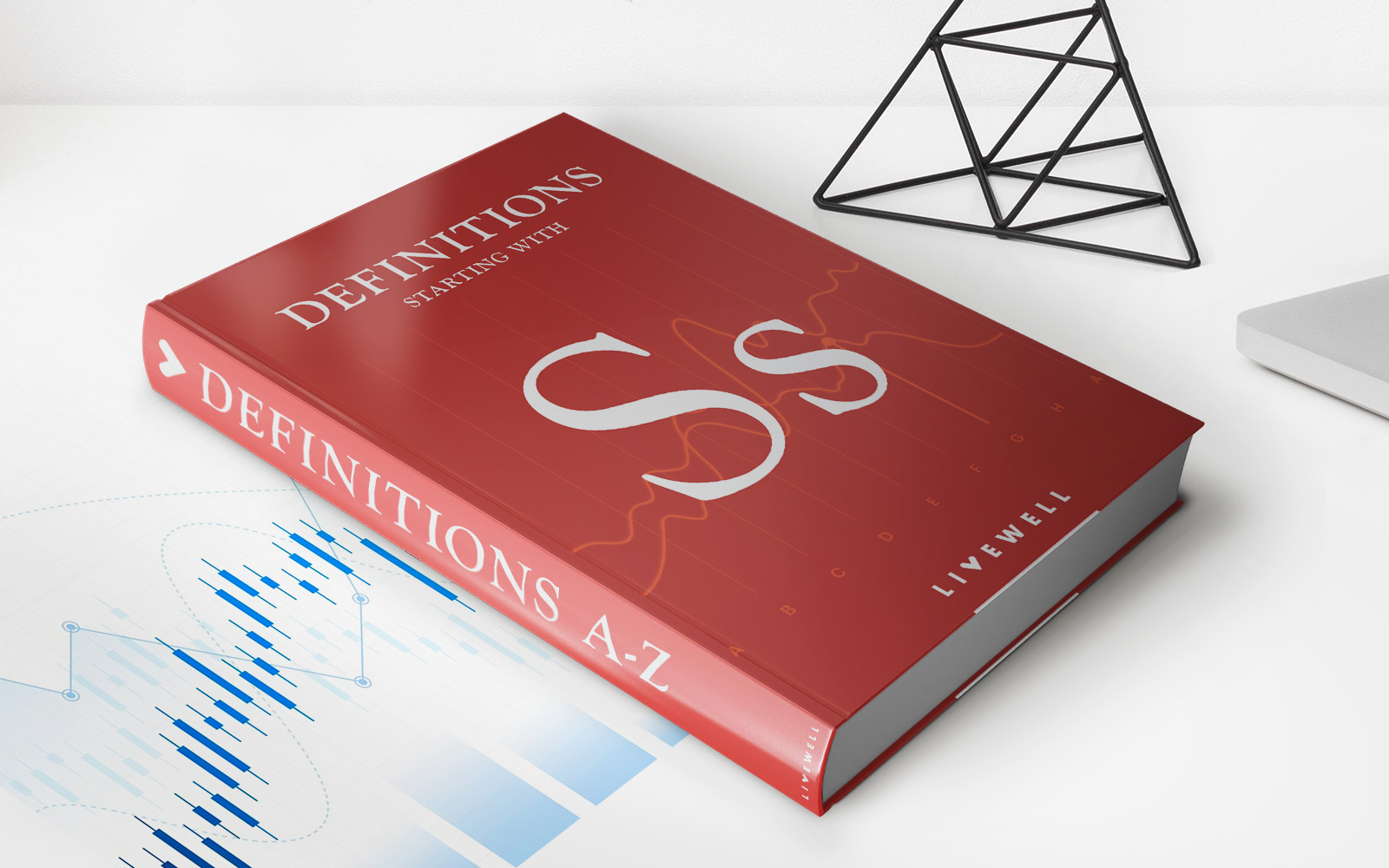Home>Finance>Where Are Royalties Reported On The Tax Return?


Finance
Where Are Royalties Reported On The Tax Return?
Published: October 29, 2023
Learn how royalties are reported on your tax return in the finance section. Find out where to record this income and maximize your deductions.
(Many of the links in this article redirect to a specific reviewed product. Your purchase of these products through affiliate links helps to generate commission for LiveWell, at no extra cost. Learn more)
Table of Contents
- Introduction
- Definition of Royalties
- Reporting Royalties on the Tax Return
- Forms to Report Royalties
- Schedule E: Supplemental Income and Loss
- Schedule C: Profit or Loss From Business
- Schedule SE: Self-Employment Tax
- Reporting Royalties on State Tax Returns
- Deducting Expenses Related to Royalties
- Reporting International Royalties
- Conclusion
Introduction
Welcome to our comprehensive guide on where royalties are reported on the tax return. If you’re involved in any form of royalty income, it’s essential to understand the proper reporting procedures to ensure compliance with the tax laws. Whether you receive royalties from books, music, patents, or other intellectual property, accurately reporting this income is crucial to avoid potential penalties or legal issues.
Before we delve into the specifics of reporting royalties, let’s start by understanding what royalties actually are. Royalties are a form of payment that an individual or entity receives for the use of their intellectual property or creative works. This can include things like books, music, films, patents, trademarks, and even mineral rights. Royalties are usually paid as a percentage of the revenue generated by the use or sale of the intellectual property.
Now that we have a clear understanding of what royalties are, let’s explore how they should be reported on your tax return. The IRS requires individuals to report all types of income, and royalties are no exception. The specific forms you need to fill out and the reporting requirements may differ depending on the nature of your royalty income and your overall tax situation.
In general, the reporting of royalties is done on various schedules of your tax return. The most common forms used for reporting royalty income include Schedule E, Schedule C, and Schedule SE. These forms are part of the Individual Income Tax Return, also known as Form 1040. Depending on your circumstances, you may need to fill out one or more of these forms.
In the upcoming sections, we will dive deeper into each of these forms and explore how royalties are reported on each of them. We will also discuss the deductions and expenses that can be claimed to offset royalty income. Additionally, we will touch upon the taxation of international royalties and how they should be reported on your tax return.
Reporting royalties on your tax return may seem daunting at first, but with a clear understanding of the process and the proper forms to use, you can ensure accurate reporting that complies with the IRS regulations. By following the guidelines outlined in this guide, you can navigate the complexities of reporting royalties and maximize your tax benefits while staying within the legal boundaries.
So, let’s get started on this journey to demystify how royalties are reported on your tax return and ensure you have all the information needed to fulfill your tax obligations effectively.
Definition of Royalties
Before we delve into the intricacies of reporting royalties on your tax return, let’s first clarify what exactly royalties are. Royalties are a form of payment that an individual or entity receives for the use or exploitation of their intellectual property or creative works. This can include various types of intellectual property such as books, music, films, patents, trademarks, and even mineral rights.
When someone uses or benefits from someone else’s intellectual property, they are typically required to compensate the owner through royalty payments. These payments are usually calculated as a percentage of the revenue generated from the use of the intellectual property. The terms and conditions regarding the payment of royalties are typically outlined in a legal agreement or contract between the creator/owner of the intellectual property and the party wishing to use it.
To illustrate, let’s consider a few examples. Suppose you are a published author, and you receive royalties from the sales of your books. Each time a copy of your book is sold, you receive a percentage of the revenue generated from that sale as a royalty payment. Similarly, if you are a musician, you may earn royalties each time your songs are played on the radio or streamed online.
It’s important to note that royalties can be received by individuals as well as businesses. For example, if a company holds patents for a particular technology, they may earn royalty income when other companies use or license that technology. Additionally, mineral rights owners may also receive royalty income from oil, gas, or other natural resource extraction on their property.
While royalties are typically associated with creative works, they can extend beyond the realm of intellectual property. For instance, franchise owners may receive royalty payments from franchisees for using their established brand and business model. This demonstrates the wide range of scenarios where royalty income can be earned.
Now that we have a clear understanding of what royalties are, we can move on to exploring how they should be reported on your tax return. The IRS requires individuals and businesses to report all types of income, including royalty income, to ensure compliance with tax regulations. The specific forms and reporting requirements may vary depending on the nature of your royalty income and your overall tax situation.
In the next sections, we will discuss the different forms used for reporting royalties on your tax return and guide you through the reporting process. We will also provide insights on deductible expenses related to royalty income and discuss the taxation of international royalties.
By understanding the definition and reporting guidelines for royalties, you can ensure accurate reporting and compliance with tax laws. Let’s proceed to the next sections, where we will delve deeper into the reporting procedures for royalty income on your tax return.
Reporting Royalties on the Tax Return
When it comes to reporting royalties on your tax return, it’s essential to accurately disclose this income to the Internal Revenue Service (IRS). The specific forms you’ll need to fill out and the reporting requirements will depend on the type of royalty income you receive and your overall tax situation.
The most common forms used for reporting royalties are Schedule E, Schedule C, and Schedule SE. These forms are part of the Individual Income Tax Return, which is typically Form 1040 for most taxpayers. The appropriate form to use will depend on the nature of your royalty income.
If you receive royalty income as an individual, typically from things like book sales, music streaming, or patent licensing, you would generally use Schedule E: Supplemental Income and Loss to report this income. On Schedule E, you will report the details of your royalty income, such as the payer’s name, the amount received, and any associated expenses.
On the other hand, if you receive royalty income as part of a business or self-employment activity, you would use Schedule C: Profit or Loss From Business. Schedule C is used to report income and expenses related to self-employment or business activities, including royalty income. You would report your royalty income, along with any related expenses, on Schedule C.
If you receive self-employment income from royalties, you may also need to fill out Schedule SE: Self-Employment Tax. Schedule SE calculates the self-employment tax owed on your net earnings from self-employment. This tax is separate from income tax and is used to fund Social Security and Medicare programs.
It’s important to maintain detailed records of your royalty income and expenses throughout the year. This includes keeping track of any relevant documents, such as royalty statements, licensing agreements, or contracts. These records will not only help you accurately report your income but also assist in substantiating any deductions or expenses you claim.
When reporting royalty income, it’s crucial to note that the IRS treats royalties as ordinary income subject to ordinary income tax rates. Therefore, the income you receive from royalties is generally taxed at your applicable tax rate based on your overall taxable income.
Additionally, if you earn a significant amount of royalty income or if you have complex tax situations, it’s advisable to consult with a tax professional or accountant. They can provide guidance tailored to your specific circumstances and ensure that your royalty income is reported correctly on your tax return.
Now that you have a general understanding of how royalties are reported on the tax return, we will explore each specific form in more detail in the upcoming sections. We will discuss the reporting requirements, deductions, and any additional considerations to help you accurately report your royalty income and fulfill your tax obligations.
Forms to Report Royalties
When it comes to reporting royalty income on your tax return, the specific forms you need to use will depend on the nature of the income and whether you receive it as an individual or as part of a business. The most common forms used for reporting royalties are Schedule E, Schedule C, and Schedule SE.
Schedule E: Supplemental Income and Loss
Schedule E is typically used to report supplemental income and loss, including royalty income received as an individual. This form is commonly used by authors, musicians, artists, and other individuals who receive income from creative works or intellectual property.
On Schedule E, you will report the details of your royalty income, such as the name of the payer, the amount received, and any associated expenses. It’s important to accurately report all your royalty income on this form to ensure compliance with the IRS guidelines.
Schedule C: Profit or Loss From Business
If you receive royalty income as part of a business or self-employment activity, you will generally report it on Schedule C. This form is used to report income and expenses related to self-employment or business activities, including royalty income.
On Schedule C, you will report your royalty income, along with any expenses directly related to earning that income. This can include expenses such as equipment costs, marketing expenses, or fees paid to industry professionals. It’s important to keep detailed records of these expenses to substantiate your deductions.
Schedule SE: Self-Employment Tax
If you have self-employment income from royalties, you may also need to fill out Schedule SE. This form is used to calculate and report self-employment tax, which is separate from income tax. The self-employment tax funds Social Security and Medicare programs.
On Schedule SE, you will calculate your self-employment tax based on your net earnings from self-employment, including royalty income. It’s important to accurately calculate and report your self-employment tax to ensure compliance with tax regulations and avoid any penalties or issues in the future.
Depending on your tax situation, you may need to fill out one or more of these forms to report your royalty income accurately. It’s important to review the IRS guidelines and instructions for each form to ensure you complete them correctly and avoid any errors or omissions.
In addition to these forms, you may also need to include other supporting documentation with your tax return, such as royalty statements, licensing agreements, or contracts. These records will help substantiate your income and any deductions or expenses you claim.
If you’re unsure about which forms to use or how to report your royalty income, it’s advisable to consult with a tax professional or accountant. They can provide personalized guidance based on your specific circumstances and help ensure that your royalty income is reported accurately and in compliance with tax regulations.
Schedule E: Supplemental Income and Loss
Schedule E is an essential form used to report supplemental income and loss on your tax return. If you receive royalty income as an individual, such as from book sales, music streaming, or patent licensing, you will generally use Schedule E to report this income.
On Schedule E, you will provide detailed information about your royalty income, including the name and identification number of the payer, the amount received, and any associated expenses. This form allows you to calculate your net income or loss from your royalty activities.
When completing Schedule E, you’ll start by entering your personal information, such as your name, address, and Social Security number. Then, you’ll list the payers of your royalty income and provide their identification numbers, which could be an employer identification number (EIN) or Social Security number.
Next, you’ll report the amounts of income received from each payer. This includes the gross royalty income you received during the tax year. It’s important to accurately report the full amount of your royalty income to ensure compliance with IRS regulations.
After reporting your income, you’ll be able to deduct any necessary expenses directly related to earning that income. These expenses may include fees paid to agents or managers, copyright registration fees, legal fees, and other expenses directly related to the production or distribution of your creative work.
It’s crucial to keep detailed records of your royalty income and any associated expenses throughout the year. This includes maintaining supporting documents like royalty statements, licensing agreements, invoices for professional services, and receipts for eligible expenses. These records will help substantiate your income and deductions in case of an IRS audit.
Once you’ve filled out all the necessary information, you’ll calculate the net income or loss from your royalty activities. If your expenses exceed your royalty income, you’ll report a loss. Conversely, if your income exceeds your expenses, you’ll report a net profit.
The net income or loss from Schedule E is then transferred to your Form 1040, where it is added to or subtracted from your other sources of income. It will contribute to determining your overall taxable income for the year.
It’s important to note that if you earn over a certain threshold of royalty income, you may be required to make estimated tax payments throughout the year. This ensures that you’re paying the appropriate amount of tax on your royalty income and avoiding any underpayment penalties.
Completing Schedule E may seem complex, so it’s advisable to consult with a tax professional or accountant if you have any questions or concerns. They can provide guidance specific to your situation and help you accurately report your royalty income on Schedule E.
By accurately completing Schedule E and reporting your royalty income and associated expenses, you can ensure compliance with tax regulations and maximize the tax benefits available to you.
Schedule C: Profit or Loss From Business
If you receive royalty income as part of a business or self-employment activity, you will generally report it on Schedule C: Profit or Loss From Business. This form is used to report income and expenses related to self-employment or business activities, including royalty income.
When completing Schedule C, you’ll provide detailed information about your royalty income, along with any relevant expenses directly related to earning that income. This includes expenses like equipment costs, advertising fees, professional fees, and other business expenses associated with your royalty activities.
The first section of Schedule C requires you to enter your personal information, such as your name, address, and Social Security number or employer identification number (EIN). You’ll also need to specify the nature of your business or self-employment activity, which in this case would be the receipt of royalty income.
Next, you’ll enter the income received from your royalty activities. This includes the gross royalty income you earned during the tax year. It’s important to accurately report the full amount of your royalty income to ensure compliance with IRS regulations.
After reporting your income, you’ll be able to deduct any necessary expenses directly related to your royalty activities. These expenses may include costs for marketing and advertising, office supplies, legal and professional services, travel expenses, and any other expenses incurred in the process of earning your royalty income.
It’s essential to maintain detailed records of your royalty income and associated expenses throughout the year. This includes keeping receipts, invoices, and bank statements that document your business-related transactions. These records will serve as supporting documentation for the expenses you claim on Schedule C.
Once you’ve recorded all the necessary income and expenses, you’ll calculate your net profit or loss from your royalty activities. If your expenses exceed your royalty income, you’ll report a loss. Conversely, if your income exceeds your expenses, you’ll report a net profit.
The net profit or loss from Schedule C is then transferred to your Form 1040, where it is combined with your other sources of income to determine your overall taxable income for the year.
Similar to reporting royalty income on Schedule E, if you earn a significant amount of royalty income or have complex tax situations, it’s advisable to consult with a tax professional or accountant. They can provide personalized guidance based on your specific circumstances and help ensure that your royalty income is reported accurately on Schedule C.
By accurately completing Schedule C and reporting your royalty income and associated expenses, you can ensure compliance with tax regulations and maximize the tax benefits available to you as a self-employed individual or business owner.
Schedule SE: Self-Employment Tax
If you have self-employment income from royalty activities, you may need to fill out Schedule SE: Self-Employment Tax in addition to Schedule C. Schedule SE is used to calculate and report the self-employment tax owed on your net earnings from self-employment, including royalty income.
Self-employment tax is separate from income tax and is used to fund Social Security and Medicare programs. As a self-employed individual, you are responsible for paying both the employer and employee portions of these taxes.
When completing Schedule SE, you’ll start by entering your net profit or loss from Schedule C, which includes your royalty income and associated expenses. If you incurred a net loss on Schedule C, you will not owe self-employment tax.
On Schedule SE, you’ll need to calculate your net earnings from self-employment, which is a key factor in determining your self-employment tax liability. You will deduct any applicable expenses and allowances, such as the deductible portion of self-employment tax, to arrive at your net earnings.
Once you have calculated your net earnings, you’ll need to determine the amount of self-employment tax owed. The self-employment tax rate consists of both the Social Security tax and the Medicare tax.
For the Social Security portion, you will pay 12.4% of your net earnings up to a certain income threshold, which is subject to change each year. Beyond that threshold, you only pay the Medicare portion, which is 2.9% of your net earnings.
However, it’s worth noting that as a self-employed individual, you can deduct the employer portion of the self-employment tax when calculating your adjusted gross income on your Form 1040. This deduction helps offset the additional tax burden faced by self-employed individuals.
Once you’ve computed the amount of self-employment tax due, you’ll transfer that total to your Form 1040, where it will be added to your income tax liability. It’s important to accurately report your self-employment tax on Schedule SE to ensure compliance with tax regulations and avoid any potential penalties or issues.
It’s advisable to consult with a tax professional or accountant when completing Schedule SE, especially if you have complex tax situations or significant self-employment income. They can provide guidance tailored to your specific circumstances and help ensure that you accurately calculate your self-employment tax liability.
By accurately completing Schedule SE and reporting your self-employment tax, you can fulfill your tax obligations as a self-employed individual and contribute to the funding of Social Security and Medicare programs.
Reporting Royalties on State Tax Returns
When it comes to reporting royalties on your tax return, it’s important not to overlook your state tax obligations. Many states require individuals to report royalty income, along with other types of income, on their state tax returns.
The specific forms and reporting requirements for state tax returns can vary depending on the state in which you reside. Some states may have specific forms dedicated to reporting royalty or self-employment income, while others may require you to report it as part of your overall income on standard state tax forms.
Typically, the state tax forms will follow a similar structure to the federal tax forms. You will need to provide information about your royalty income, including the amount received, the payer’s name, and any related expenses, on the appropriate sections of the state tax forms.
It’s crucial to review the instructions provided by your state tax authority or consult with a tax professional to ensure that you are correctly reporting your royalty income on your state tax return. Failing to report royalty income on your state tax return can result in penalties or legal issues, so it’s important to comply with state-specific tax regulations.
In addition to reporting royalty income, some states may have additional requirements or deductions related to royalty income. For example, certain states may allow deductions for business-related expenses or offer specific tax credits for individuals engaged in creative industries.
It’s also worth noting that states may have different tax rates or tax brackets compared to the federal tax rates. Therefore, your state tax liability may vary based on the laws and regulations specific to your state.
As with your federal tax return, it’s essential to maintain accurate records of your royalty income and any associated expenses for your state tax return as well. This includes keeping track of royalty statements, contracts, and other relevant documents as proof of income and deductible expenses during an audit.
Each state has its own deadlines for filing state tax returns, which may differ from the federal tax deadline. It’s important to stay informed about your state’s specific tax return deadline to avoid any late filing penalties.
Overall, reporting royalties on your state tax return requires careful attention to detail and compliance with state-specific regulations. By understanding and meeting your state tax obligations, you can ensure the accurate reporting of your royalty income and remain in good standing with your state tax authority.
Deducting Expenses Related to Royalties
When reporting royalty income on your tax return, it’s important to take advantage of any deductible expenses directly related to earning that income. Deductible expenses can help reduce your overall taxable income and potentially lower your tax liability.
Expenses that may be eligible for deduction related to your royalty activities can vary depending on the nature of your income and the specific expenses you incur. To determine which expenses are deductible, it’s important to consult the IRS guidelines or seek advice from a tax professional.
Some common deductible expenses related to royalties include:
1. Professional fees: This may include fees paid to lawyers, accountants, agents, or other professionals involved in managing or promoting your creative works.
2. Reproduction costs: Expenses related to making copies of your creative works, such as publication costs or printing and manufacturing expenses.
3. Advertising and promotion: Costs incurred for marketing and advertising your creative works, including promotional materials, online or print advertisements, and website development.
4. Research expenses: Costs associated with conducting research or gathering information for the creation or improvement of your original works.
5. Equipment and supplies: Expenses for purchasing or maintaining equipment, software, or supplies directly used in your creative activities, such as musical instruments, cameras, or art materials.
6. Travel expenses: Deductible travel expenses can include transportation, lodging, and meals if they are directly related to your royalty activities, such as attending conferences, trade shows, or promotional events.
7. Education and training: Costs for workshops, courses, or educational materials that enhance your skills and knowledge in your creative field.
It’s crucial to keep detailed records of your expenses throughout the year. This includes maintaining receipts, invoices, and any relevant documentation that substantiates your expenses. Without proper records, you may struggle to prove the legitimacy of your deductions in case of an audit.
When reporting your deductible expenses, you will typically list them on the appropriate section of your tax form, such as Schedule E or Schedule C. Ensure that you follow the specific instructions provided by the IRS or consult with a tax professional to accurately report your expenses.
Remember, not all expenses related to your royalty activities may be fully deductible. Some expenses may only be partially deductible, while others may be subject to specific limitations or exclusions. Understanding the tax regulations and seeking guidance when needed will help ensure that you claim the appropriate deductions for your expenses.
By properly deducting eligible expenses, you can reduce your taxable income and potentially lower your tax liability, providing financial benefits for your royalty activities. However, it’s essential to comply with IRS guidelines and maintain accurate records to support your deductions.
Reporting International Royalties
If you receive royalty income from international sources, it’s important to understand the specific rules and reporting requirements for reporting international royalties on your tax return. Reporting international royalty income requires additional consideration due to the potential involvement of multiple countries and the potential impact on your tax liability.
The first step in reporting international royalties is to determine whether the country from which you receive the royalties has a tax treaty with your home country. Tax treaties are agreements between countries that regulate the taxation of income earned between residents of those countries. These treaties help prevent double taxation and may provide relief or exemptions for certain types of income.
If there is a tax treaty between your home country and the country from which you receive royalties, you’ll need to review the treaty provisions to understand how the income should be treated for tax purposes. The treaty will outline whether you need to pay taxes in both countries, the tax rates applicable, and any provisions for exemptions or deductions.
If there is no tax treaty, you may still be required to report and pay taxes on the international royalty income in both countries. It’s crucial to comply with the tax laws of each country to avoid penalties or legal issues.
When reporting international royalty income, you may need to use additional forms or schedules, depending on the tax requirements of your home country. These forms may ask for specific details about the international royalty income, such as the payer’s location, the amount of income received, and any applicable taxes paid in the foreign country.
It’s important to maintain documentation and records related to your international royalty income, such as royalty statements, agreements, and proof of any taxes paid in the foreign country. These records will help substantiate your income and any foreign tax credits or deductions you claim.
If you need assistance with reporting international royalty income, it’s advisable to consult with a tax professional or accountant with international tax expertise. They can provide guidance on the specific reporting requirements, help minimize any tax liabilities, and ensure compliance with both domestic and international tax laws.
When dealing with international royalty income, it’s crucial to remain aware of any changes in tax laws, reporting requirements, or tax treaties between countries. Staying informed will help you navigate the complexities of reporting international royalties and ensure accurate reporting while maximizing your tax benefits.
Overall, reporting international royalties requires careful attention to the specific rules and regulations of each country involved. By understanding and complying with the tax laws in both your home country and the country from which you receive royalties, you can fulfill your tax obligations and avoid any potential issues related to international taxation.
Conclusion
Understanding how to report royalties on your tax return is essential for individuals and businesses involved in royalty income. By accurately reporting your royalty income and complying with tax regulations, you can ensure that you meet your tax obligations while maximizing potential tax benefits.
Throughout this guide, we have explored various aspects of reporting royalties, including the different forms used, such as Schedule E, Schedule C, and Schedule SE. We have also covered deducting expenses related to royalties and the reporting of international royalty income. Each of these sections provides valuable insights into the proper procedures and considerations when reporting royalties.
When it comes to reporting royalties, accuracy is key. It’s vital to keep detailed records of your royalty income and associated expenses throughout the year. This includes maintaining documents like royalty statements, contracts, receipts, and other relevant materials. These records will serve as evidence to support your reporting and deductions in case of an audit.
Furthermore, it’s always wise to consult with a tax professional or accountant to ensure that you are adhering to the specific tax regulations based on your unique circumstances. Their expertise can provide valuable guidance and help you navigate any complexities or uncertainties related to reporting royalties.
Remember, reporting royalties is not solely a tax requirement but also a legal responsibility. Neglecting to report royalty income accurately can lead to significant penalties, interest charges, and even legal consequences. Therefore, it is crucial to prioritize compliance and stay informed about any changes in tax laws or reporting requirements.
By following the guidelines outlined in this guide and seeking appropriate professional advice when needed, you can confidently report your royalty income, mitigate tax liabilities, and ensure compliance with both federal and state tax regulations.
Reporting royalties may seem complex, but with knowledge and proper planning, you can navigate this process effectively. By keeping accurate records, understanding the relevant forms, considering deductible expenses, and staying informed about international reporting requirements, you can fulfill your tax obligations and make the most of your royalty income.
So, empower yourself with the knowledge gained from this guide and approach your tax obligations with confidence. By doing so, you can establish a solid foundation for accurately reporting royalties and managing your tax responsibilities now and in the future.














